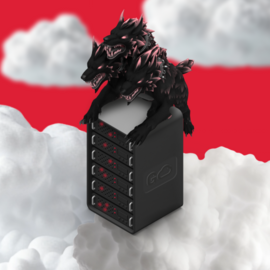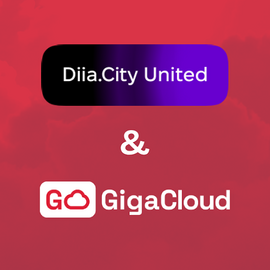Is owning servers more profitable than cloud services? Let’s count TCO
31.07.2023
If your business is not critically susceptible to downtime, and you can wait for a day or two while IT team «revives» the website or CRM-system, then $800 servers will suffice. But if you can’t let yourself be «down» and don’t want to lose money, reputation and clients trust, we suggest that you read this article.
What is TCO?
Firstly, let’s define CapEx and OpEx.
CapEx (short for ‘сapital expenditure’) — expenses for purchasing non-current assets as well as their modification (build-up, equipment, reconstruction and modernization).
OpEx (short for ‘operating expenditure’) — constant company expenses related to business processes.
TCO or Total Cost of Ownership, Life Cycle Cost — is a total value of target expenses. The owner has to bear these expenses from the moment of coming into ownership and until coming out of it and completing the full extent of the obligations associated with ownership.
In simple words, TCO is the sum of initial CapEx (capital expenditure) and subsequent OpEx (operational expenditure).
This methodology was developed in the late 80s by Gartner experts. With its help, the financial costs of owning computers on the Wintel platform (MS Microsoft + Intel) were calculated. In the early 90s, the Interpose company transformed it into a full-fledged model for analyzing the financial side of the information technologies use.
It is worth bringing up TCO for comparing the same period. Most often, 3-5 year periods are analyzed. And then the TCO of the two systems are compared.

What expenses TCO includes
According to the TCO methodology, expenses on own IT infrastructure exploitation are divided into «direct» and «indirect». «Direct expenses» involve:
- Purchase of hardware and software (laptops, servers, uninterruptible power supplies, licenses, software update subscriptions, additional memory, hard drives, etc.).
- Costs for IT personnel (salaries, travel, training, certification, etc.).
- Expenses for communication channels, internet, and electronic data exchange services (subscription fee for internet connection and communication channels between offices, web server storage (if it is located on the provider's site), domain name support, external e-mail servers etc).
«Indirect expenses» are all company’s costs related to IT-infrastructure exploitation which, however, do not directly affect the prime cost of production or services. The list of «indirect expenses» includes:
- Time needed for formulating technical requirements to equipment, its purchase, delivery, and installation.
- Information system downtime, as a whole as well as of its separate parts, etc.
Moreover, corruption schemes used when purchasing equipment are also considered as «indirect expenses». «Indirect expenses», as a rule, constitute the main share of the total cost of owning an IT infrastructure and are several times higher than «direct costs».
Cloud vs Server
There are two options for solving issues related to the construction of IT infrastructure: buying your own equipment or renting cloud infrastructure from a cloud operator. For starters, you need to figure out what exactly you will have to pay for in both options.
Equipment
IaaS is infrastructure and software licenses for rent with zero capital investment at the start. Renting cloud infrastructure involves that the company undertakes to make monthly payments and not worry about anything. The cloud allows you to reduce or increase the number of resources consumed and pay only for those that are actually used. Under tax law, a company can cut down its taxable profit in this way.
When buying your own equipment, you need to spend a large amount of money all at once. To build a fault-tolerant cluster, hypervisor suppliers recommend purchasing at least four servers, a data storage system, licenses, renting a server room, and ensuring its ventilation and air conditioning. It is also necessary to buy backup nodes, which allows, in the event of failure of the main ones, to quickly replace them and thereby eliminate the risk of critical services downtime.
The equipment will be under warranty for a year, after which you will have to pay for post-warranty service. It is difficult to predict this amount. You will have to spend $6-7K on a decent new server.
You can buy a used server if the specifics of your company and its business tasks permits it. But at the same time, you need to understand that a used server has no warranty, it will age even faster, and the probability of failure is many times higher than that of a new one.
Server park maintenance and optimization
In addition to the fact that the equipment needs to be acquired, it also needs to be maintained. This takes a lot of time and resources of the system administrator, and he will have no time at all to improve the company's services and products.
When it comes to the cloud, the operator's technical specialists optimize the infrastructure based on the results of testing it and will continue to ensure its optimal operation, maintenance, activity, and modernization of resources. So your sysadmin will be able to engage in more interesting tasks instead. If you wish, you can offer him to training to improve his qualifications and gain new knowledge. This will be a more profitable investment in prospect.
Placement of «gear»
Placing a server in an office is dangerous and unprofitable. The fee for colocation of the simplest equipment in the data center ranges from $400 per year to $600 per month. The amount depends on the server type and capacity.
After three years, the equipment will become obsolete, and it will be necessary to find the same amount again to replace it. In addition to the main hardware on which the productive system works, you need to think about the backup, where data copies will be stored. It doubles the budget.
Purchase of equipment is an asset. It gets depreciated in three years as the equipment gradually wears out and ages. That is, the amount of money on the company's account decreases sharply and instantly, and depreciation occurs at 1/36 of this amount per month. The income tax is higher, although formally the money from the purchase of servers has not yet paid off. If a force majeure such as a quarantine occurs during the depreciation period, the gear will be idle and will not bring in money.
There are still advantages to buying your own equipment. When pricing a company, it can be sold at a higher price because it has capitalization. At the same time, great attention is paid to the date of the equipment manufacture. Obsolete equipment that is not supported by the manufacturer will be valued very cheaply. That's why most CFOs and business owners lean toward operating expenses over the capital ones.

Licenses
If you want to build your own infrastructure, you must understand that you will have to purchase software licenses. Even when the resources are not yet being used to their full capacity. Licenses can be purchased, or rented on an annual subscription, their price usually depends on the business needs. There are businesses that use pirated software, but this is illegal and carries a lot of risks.
Cloud infrastructure allows you to save on licenses. Many of them are already included in the service price, and others can be subscribed to for the required period rather than purchased. In addition, the cloud operator helps to estimate the required number of licenses.
Security
A server located in the office can be confiscated along with critical information. The cloud operator protects the infrastructure at the hardware level and does not store client data on a single physical server.
If the enterprise uses unlicensed software, a fine is imposed for it. And these are already financial risks, for which money is needed. Also, financial risks reduce the value of the enterprise at the time of sale.
If the business activity is related to sensitive data (personal and medical data, financial information), it is necessary to obtain security certificates:
- International standard for information security ISO 27001 and international standard for privacy information management ISO 27701.
- Certificate of compliance with the Complex system of information protection (CSIP).
- PCI DSS information security compliance certificate.
It is difficult to obtain these certificates on your own, as you need to pass a number of complex checks and implement a set of measures to ensure data protection at various levels. And it is not cheap — around $1K.
By placing your IT infrastructure in the cloud, you can get these certificates faster and cheaper. The price depends on the business specifics.

How to calculate the total cost of owning IT infrastructure
TСO is used to evaluate several projects. The project with a lower implementation cost wins. At the same time, we do not take into account other features: security, fault tolerance, flexibility, mobility, innovativeness, etc.
Often, the cost of «gear» and the cloud are compared head-to-head. And that's wrong. Usually, the cost of similar resources in the cloud is estimated, even though current business needs are much lower. The cloud is flexible, easy to scale, and the cloud operator always has excess resources because of creating a backup. There is no need to buy resources with a surplus and waste money. If calculated correctly, the total cost of owning your own infrastructure and resources in the cloud can differ by two times in three years.
Do not forget about the concept of «money in time». Money spent today is worth more than money spent tomorrow or the day after tomorrow. The money may be borrowed, and the company will pay more interest if it is spent today. And your own funds, not spent today, can be kept on deposit or invested in the circulation of your company and be used to earn a margin. This is why dynamic indicators are used during the evaluation of investment projects. This indicator takes into account the time value of money and is based on the fact that money spent today is worth more than money spent in later periods. Such an indicator is NPV. It is based on summing up the cash flow, which is discounted in periods at the discount rate.
Cloud TCO can also vary
Total cost of ownership can be calculated and compared not only in terms of cloud and hardware. But also for two clouds of different providers. For example, AWS and GigaCloud.
With the beginning of the full-scale russian invasion of Ukraine, AWS provided the opportunity for Ukrainian companies to place their services and IT infrastructure in its clouds for free. According to unofficial data, the period of free use ends in December 2023.
We took a closer look at a real Ukrainian state organization that hosts five of its critical services in AWS. The name of the organization is not indicated for security reasons. We remind you that it is currently hosted for free. When the grace period ends, the company will pay about $29K per month for renting cloud resources. Provider support and software support by an external integrator will be added separately. In three years, the costs will amount to more than $1 million. A similar placement in the GigaCloud cloud will cost the state organization about $744K. Therefore, the company can start saving now, without waiting for December.
Conclusion
Our analysis shows that for companies that are developing and planning to enter new markets, it is better to toss the purchase of physical equipment and start looking at cloud technologies. The cloud allows you to quickly get the necessary amount of resources and launch today. The cloud operator always has an excess of resources because of having to create a reserve. There is no need to buy extra resources and waste money. You will only pay for what you use.
The CapEx model is relevant for large business owners who plan to sell it in the future. Because the larger its capitalization, the higher the price. But you have to be prepared for the fact that every year the equipment gets old, and the costs of its maintenance keep growing.
TCO can be calculated not only for the «ware» and the cloud. You can compare two clouds of different operators. It is more convenient and cheaper to host in the cloud of a Ukrainian operator. Payment is made in UAH, and the quality of service provision is in no way inferior to foreign ones.
If you want to estimate the total ownership cost for your IT infrastructure, write us at sales@gigacloud.ua, and we will give you advice.






